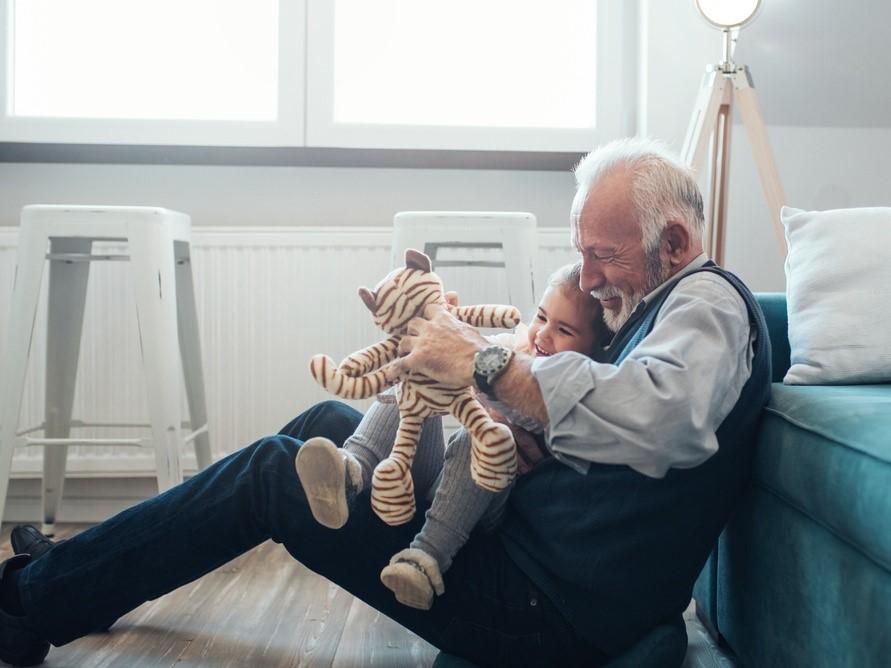Ageing feet
Peer reviewed by Dr Doug McKechnie, MRCGPLast updated by Dr Philippa Vincent, MRCGPLast updated 24 Apr 2023
Meets Patient’s editorial guidelines
- DownloadDownload
- Share
- Language
- Discussion
As feet get older they lose some of their strength and springiness due to changes in the skin and joints. Feet tend to spread and lose the fatty pads that cushion them. This does not mean that feet should necessarily become painful as they get older. However, it does mean that they are not able to sustain the same levels of activity that they could when younger. For that reason older people need to take good care of their feet.
In this article:
Continue reading below
What natural changes happen to ageing feet?
Every part of the body ages. However, the feet are subjected to particularly heavy treatment throughout life. They experience repeated impact, weight bearing, pressure, friction and often minor trauma.
The natural changes that happen to the feet over time include:
Thinning of the skin.
Wear and tear of the joints.
Reduced muscle strength.
In addition to this, feet will be more at risk of injury and pain if there are also conditions which:
Affect the nerve supply or blood supply to the feet.
Affect the bones, muscles and joints themselves.
Cause the feet to swell.
These include:
Kidney disease.
Effects of ageing on feet
The young foot is springy, strong and resilient. It has arches bound together by elastic tendons which allow for springiness and shock absorbtion. Joints are flexible and bones are strong and resilient. Skin is tough, the blood supply is efficient, and healing is fast. All of the parts of the foot become less resilient with age and eventually the foot becomes less able to resist repeated stresses such as impact, pressure and extremes of temperature.
Common problems of ageing feet include:
Loss of springiness
The older foot becomes less springy as the tendons which hold the arches together lose their stretch. This reduces the ability of the foot to absorb impact so that, for example, feet become less tolerant of jumping off a chair.
Additionally, areas of wear and tear (osteoarthritis) may develop in the joints between the bones. As the joint develops wear and becomes rougher over time, the small movements between the bones of the foot become less flexible. This also reduces the springiness of the foot. Arthritis and wear and tear of the foot are more likely with these conditions:
Severe foot trauma.
Foot overuse injuries from sporting or dancing activities - for example, running or ballet.
Inflammatory arthropathy, such as rheumatoid arthritis or systemic lupus erythematosus, affecting the feet.
Gout.
Obesity.
The lack of flexibility in the joints, combined with the tendency of the arches to drop, can lead to a change in the shape of the feet (flat feet). The ankle joint, subtalar joint and the big toe joint frequently develop arthritis.
Loss of strength
With age, muscles lose some of their strength. Muscle strength and muscle power peak in the 20s and early 30s and gradually reduce after this. Regular exercise slows this reduction of power.
The bones of the foot also thin with age. This is extreme in conditions such as 'thinning' of the bones (osteoporosis) when the bones may become fragile. However, all bones thin with age. This natural thinning is made worse by smoking and by a lack of exercise. It's also worse in those who have:
Poor vitamin D intake.
High or regular doses of steroids.
Bodybuilding steroid drugs ('anabolic steroids').
Long periods of their life without periods due to:
Pregnancy and breastfeeding.
Conditions such as early menopause and anorexia nervosa in women, which affect the periods.
Testicular failure (sometimes called andropause).
Loss of resilience
With increasing age the skin becomes less elastic and has less fat in its structure. This reduces the cushioning and increases vulnerability to damage.
The padding under the balls of the feet tends to slip over time. This is particularly so in those who have worn high heels a lot and in those with rheumatoid arthritis, leading to pain (metatarsalgia) and callus formation. (A callus is a hard and thickened area of skin.) Use of padding in the shoe can help with this.
Decreased skin cell turnover with ageing means decreased injury repair.
Dry skin can result from the decreased fatty layer and can contribute to cracked heels and calluses.
Decrease of the fat pad on the sole reduces cushioning and can increase sensitivity to pain.
Swelling
A tendency of the lower legs and feet to swell increases with age. Swelling puts additional pressure on the structures in the foot. There are many reasons for this, including:
Loss of elasticity in the leg veins.
Loss of muscle tone in the calves (the muscles in the calves are a part of the mechanism for pumping blood back upwards to the heart).
Heart disease.
Some medications.
Changes to toenails
Toenails usually become thicker and more brittle with age because their growth slows over time. This thickening is worsened by conditions such as an underactive thyroid gland (hypothyroidism) and peripheral arterial disease.
Fungal infection of the toenails can also cause toenail thickening.
Loss of blood supply
The blood supply to the distant (or peripheral) parts of the body is the most likely to be affected by poor circulation due to conditions such as hardening of the arteries (atherosclerosis). Blood vessels tend to stiffen and narrow a little with age. Varicose veins and other conditions which cause leg swelling will make this worse. This reduces the ability of the feet to repair minor injuries quickly.
Foot conditions
The following conditions can all result from ageing of the feet, sometimes combined with mistreatment:
Bunions. These are bony protrusions at the base of the big toe, associated with hallux valgus where the big toe moves towards the other toes. The most common causes are:
Wear and tear/osteoarthritis of the joint at the base of the big toe.
A genetic predisposition to a weakness of this joint:
Wearing shoes with a narrow forefoot that squeezes the toes.
Wearing high heels that force the toes too far forward in the shoes.
Morton's neuroma. This enlarged nerve, more common in women than in men, causes pain, burning, tingling or numbness on the ball of the foot or between the toes. It can result from wearing shoes that are too tight.
Plantar fasciitis. This in an inflammation of tissue in the bottom of the foot. The usual symptom is heel pain or under the ball of the foot. Arthritis and wearing shoes with inadequate cushioning are other causes.
Continue reading below
How to protect ageing feet
Footwear
As one ages it's important that footwear is warm enough and not too stiff. Shoes should be comfortable and supportive. Footwear that rubs, is too tight or causes soreness should be avoided as these may restrict the circulation or cause pressure damage to the skin. High heels should be avoided and shoes should be supportive and hold hold the feet firmly in place.
Shoes should support the arches of the feet. Cushioned insoles can be useful.
Shoes should be big enough to accommodate feet that have a tendency to swell so that they don't rub.
Feet should be kept warm. Socks should be worn in cold weather and these should fit smoothly inside the shoes. Socks and tights should fit well.
Exercise
Feet should be exercised regularly. "If you don't use it, you lose it." Exercise improves the circulation in the feet and legs and helps to prevent swelling of the feet. Sitting for long periods with feet on the floor should be avoided. People who are unable to move around regularly due to health conditions should elevate their feet when sitting.
Skin care
Look after the skin of your feet. Remove hard skin which can be a breeding ground for germs (bacteria) and which can tend to lead to callus formation. Moisturise the feet regularly, and get rid of any hard skin with a pumice stone.
If you develop foot blisters, bunions or any deformity of your feet like clawing of the toes or dropping of the arches, consider seeing a person qualified to diagnose and treat foot disorders (a podiatrist - previously called a chiropodist).
After washing, apply a foot cream. This should have skin-hydrating lubricants and emollients to help keep your feet soft and free from hard, thickened areas (calluses) and cracks. It should also gently exfoliate your skin and protect it from infection.
Trim and file your toenails straight across instead of rounding them. This helps prevent ingrown toenails. Use a nail clipper, not scissors.
Inspect your feet daily if possible. Give immediate attention to any breaks or cracks in the skin or to any other problems that you notice.
If you have had regular problems with your feet consider taking pre-emptive action with regular visits to a podiatrist to help keep your feet healthy.
General health
Managing underlying health conditions can help reduce their impact on ageing feet. Keeping weight to the normal range is beneficial, as being overweight causes additional pressure on the feet.
People with diabetes should have an annual foot check at their GP surgery.
People with peripheral arterial disease, problems with nerves in their feet or deformities of their feet should be especially vigilant at regularly checking their feet.
Patient picks for General health

Senior health
Living with a long-term condition
A long-term condition cannot be cured but its symptoms and complications may be controlled with treatment. Examples are arthritis, asthma, diabetes, epilepsy and high blood pressure. Long-term conditions can have an effect on your role within the family, your job, where you live, your education and your finances. However, there are many sources of support you can access, including health and social services, the government and voluntary organisations.
by Dr Hayley Willacy, FRCGP

Senior health
Ageing
Ageing (also spelt aging) is the process of becoming older. This happens continually throughout life. Older age tends to bring with it unwelcome changes such as a greater risk of health problems and typical changes to appearance. As populations are living longer, the challenge is to avoid living longer in ill health, but instead to have longer lives which are happy and healthy.
by Dr Mary Harding, MRCGP
Further reading and references
- Sparling PB, Howard BJ, Dunstan DW, et al; Recommendations for physical activity in older adults. BMJ. 2015 Jan 21;350:h100.
- Menz HB; Biomechanics of the Ageing Foot and Ankle: A Mini-Review. Gerontology. 2015;61(4):381-8. doi: 10.1159/000368357. Epub 2014 Nov 11.
Continue reading below
Article history
The information on this page is written and peer reviewed by qualified clinicians.
Next review due: 22 Apr 2028
24 Apr 2023 | Latest version
23 Apr 2015 | Originally published
Authored by:
Dr Mary Elisabeth Lowth, FRCGP

Ask, share, connect.
Browse discussions, ask questions, and share experiences across hundreds of health topics.

Feeling unwell?
Assess your symptoms online for free
Sign up to the Patient newsletter
Your weekly dose of clear, trustworthy health advice - written to help you feel informed, confident and in control.
By subscribing you accept our Privacy Policy. You can unsubscribe at any time. We never sell your data.